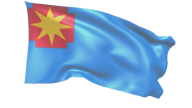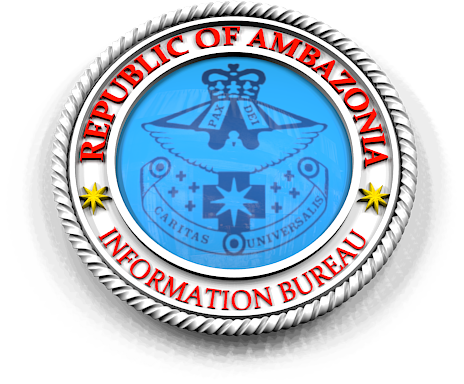1. Southern British Cameroons was part of the United Nations Trust Territory of the Cameroons under United Kingdom’s Administration. The Trusteeship Agreement between the United Nations and the United Kingdom was signed on 13 December 1946.
2. The name, Southern British Cameroons, comes from the fact that the British Administering Authority had divided the Trust Territory into a Southern and Northern part, even while the territory was still a League of Nations mandated territory. Southern British Cameroons was created by the British Order in Council of June 26, 1923. By this act of the colonial authority, the Southern British Cameroons became a distinct territory from Northern British Cameroons within the international system, and a unit of self-determination.
3. Southern British Cameroons therefore does not refer to the Southern part of the Republic of Cameroon, but the Southern part of the British Cameroons.
4. French Cameroun was a United Nations Trust Territory under France.
5. French Cameroun and British Cameroons were separate UN Trust Territories with separate agreements, and each governed separately by Article 76(b) of the United Nations Charter. Apart from the fact that they were former parts of an ephemeral German Kamerun that lasted just 30 years and which was formally dismembered by the Versailles Treaty of 1919, there was no other link between them, either in language, administration, culture, politically or otherwise. Each was being prepared for its own self-determination as per Article 76(b) of the UN Charter.
6. British Cameroons was ruled from Nigeria until 1954, when members of the Southern British Cameroons in the Nigerian Eastern House of Assembly walked out and returned to Buea, capital of Southern British Cameroons, where they formed a thriving parliamentary democracy which lasted until 1961. From 1954 then, the Southern British Cameroons was self-governing, with its government, Prime Minister, parliament, judiciary and House of Chiefs. It conducted its first free and fair election in which power changed hands peacefully in 1959.
7. On 1 January 1960, in application of Article 76(b) of the UN Charter, French Cameroons gained independence from France and became known as La Republique du Cameroun, or in English, the Republic of Cameroon.
8. On 1 October 1960, Nigeria, from which Southern British Cameroons was still being ruled to some degree, also achieved independence. Since Southern British Cameroons was not a part of Nigeria, it became necessary to sort out the Southern British Cameroons situation with urgency.
9. The Administering Authority, with the pretext that Southern British Cameroons was small and not economically viable, proposed what was known as “independence by joining” for the Southern British Cameroons. Under this idea of “independence by joining”, the Southern British Cameroons was going to achieve independence either by joining the Federation of Nigeria, or by joining the independent Republic of Cameroon. Independence by joining was itself a violation of UNGA Resolution 1514 of 1960 affirming that independence was the inherent and inalienable right of all colonies and trust territories as a guarantee for their enjoyment of complete freedom.
10. In pursuance of this idea of “independence by joining”, a UN-organized Plebiscite was held in the Southern British Cameroons on 11 February 1961 in which the following questions were put to the people of Southern British Cameroons: “Do you wish to achieve independence by joining the independent Federation of Nigeria?” or “Do you wish to achieve independence by joining the independent Republic of Cameroon?”
11. The People of Southern British Cameroons voted to “achieve independence by joining the Republic of Cameroon”.
12. Of course, the Plebiscite was merely a mechanism used by the United Nations to discover the intention of the People of Southern British Cameroons. The proposed partners for joining, Nigeria and Republic of Cameroon, were not part of this consultation and quite clearly also, the determination of this choice by the UN could not be the implementation of the choice. The plebiscite was therefore not an agreement at all with the Republic of Cameroon; it was not also the joining contemplated in the Plebiscite questions. It was simply a question and answer session between the United Nations and the People of Southern British Cameroons, with no one else being party to it. It created no obligations for the People of Southern British Cameroons towards any third party. Only after the implementation of the intention expressed in the Plebiscite could any obligations be created.
13. As is always the case with the joining of two international territories or subjects of international law, certain due procedures had to be observed, to ensure valid legal union and safeguard the rights of all parties.
14. The terms of this “independence by joining” were governed by two important United Nations Resolutions, and the bilateral agreements between the proposed partners for the joining. Both Nigeria and the Republic of Cameroon had made promises as to what the nature of the joining between them would be.
15. The pertinent Resolutions concerned are: (1) Resolution 1541 of 15 December 1960 laying down the conditions under which a non-self governing territory could be said to have achieved full self-government, and (2) Resolution 1608(XV) of 21 April 1961 which was adopted following the UN-organized Plebiscite in the Southern British Cameroons.
16. After the Plebiscite in which the People of the Southern British Cameroons made their choice and intention known, the UN adopted Resolution 1608(XV) on 21 April 1961 in which it endorsed the results of the Plebiscite, conducted a vote on the joining and in paragraph 5, called for the implementation of the policies reached between the parties.
17. During the vote in Resolution 1608(XV), the Republic of Cameroon voted “NO”, i.e., against union with the Southern British Cameroons. This “NO” vote was instigated by France which led all the then-independent former French colonies in Africa, except Mali, to also vote “NO”.
18. The present case of the People of the Southern British Cameroons is that despite the Plebiscite and despite Resolutions 1541 and 1608(XV), the Republic of Cameroon simply ignored all the Resolutions and agreements reached and illegally occupied the Southern British Cameroons. Not one of the terms of the pertinent United Nations Resolutions was respected, nor the promises made by the Republic of Cameroon herself.
19. The People of the Southern British Cameroons are backing up their claim by challenging the Republic of Cameroon to produce the treaty of Union between them or any valid instrument of international law giving it jurisdiction over the Southern British Cameroons or a treaty in conformity with Article 102(1) of the United Nations Charter requiring all Member States to register any treaty entered into with the Secretariat of the United Nations.
20. Consequently, the current entity styling itself variously as “the Republic of Cameroon”, “Cameroon”, “the State of Cameroon” or “La Republique du Cameroun” is actually two territories separated by an international boundary. These territories are French Cameroun which achieved independence on 1 January 1960 as Republic of Cameroun, and the Southern British Cameroons presently under the illegal occupation and annexation of that French Cameroun which achieved independence from France on 1 January 1960.
21. It is within this context of the illegal occupation of their territory that the People of the Southern British Cameroons have submitted, to the AU Border Programme and all stakeholders, their border maps and the international treaties that established them, and are urging the AU and Member States to ensure that the boundaries claimed by the Republic of Cameroon in particular, comply with Article 4(b) of the African Union Constitutive Act, Article 102(1) of the UN Charter and all AU and UN principles in general.
22. In sum, the People of the Southern British Cameroons are calling for the urgent withdrawal of the forces and the administration of the Republic of Cameroon from the territory of the Southern British Cameroons and the peaceful separation of the two countries.
The BAKASSI ICJ RULING:
23. The People of the Southern British Cameroons are also pointing out that The Bakassi Ruling cannot serve as an international legal instrument which gives the Republic of Cameroon jurisdiction over the Southern British Cameroons, because that ruling:
(i) demarcated only the boundary between the Federal Republic of Nigeria and the two Cameroons (Former French Cameroons plus occupied Southern British Cameroons subsumed under one title, “Cameroon”);
(ii) it did not examine the pretended claim of Former French Cameroons over the Southern British Cameroons, because the matter was never put before it;
(iii) it did not address the issue of the boundary between Former French Cameroons and the Southern British Cameroons, because the matter was never put before it;
(iv) it did not examine the boundaries inherited by Former French Cameroons on its day of independence, 1 January 1960, because the matter was never put before it;
(v) it cannot be used as an instrument through which the Republic of Cameroon can be said to have “inherited” the territory of the Southern British Cameroons close to 57 years after its independence on 1 January 1960;
(vi) it cannot be used, contrary to Article 4(b) of the African Union Constitutive Act, to invent two separate dates of independence for Former French Cameroons;
(vii) it cannot enable Former French Cameroons to illegally acquire territory outside of the territories it inherited at independence, namely, French Cameroons;
(viii) it cannot be used as a union treaty between the Southern British Cameroons and Former French Cameroons, because it is not a treaty; and finally
(ix) by virtue of Article 59 of the ICJ statutes which state that ICJ rulings are binding only between the parties, the Bakassi Ruling cannot be taken to be a ruling on the boundary dispute between the Southern British Cameroons and Former French Cameroons. The question remains unresolved.
24. It is worthy of note that the ICJ made the observation, a geographical fact, that the Bakassi Peninsula (located some 350 kilometres from the western maritime frontier of Former French Cameroon) is firmly within the Southern British Cameroons.



